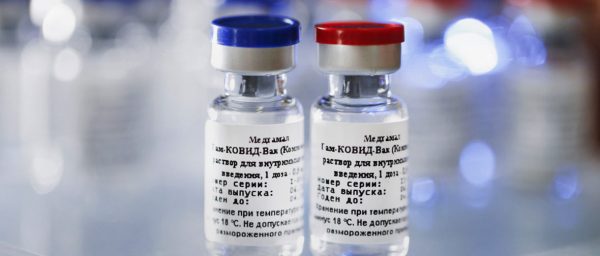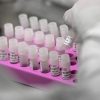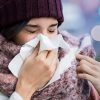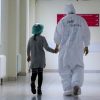 Irina Yakutenko, a molecular biologist, science journalist, author of the book about coronavirus “The virus that broke the planet”, talks about important events that have happened in the development of anti-coronavirus vaccines in recent days.
Irina Yakutenko, a molecular biologist, science journalist, author of the book about coronavirus “The virus that broke the planet”, talks about important events that have happened in the development of anti-coronavirus vaccines in recent days.
A panel of independent experts has recommended that the US FDA regulator issues the Emergency Use Authorization (EUA) for the Pfizer/BioNtech mRNA vaccine. Previously, the UK and Bahrain approved the use of this vaccine. At the same time, news about deaths and side effects from this vaccine appeared in the media.
Until recently, we did not have detailed documents about what happened to the volunteers who took part in the third phase of the mRNA vaccine clinical trials by Pfizer/BioNtech, we only had press releases from the developers. Now, the FDA (U.S. Food and Drug Administration) has released a detailed report on all phases of the trials on its website.
And it turned out that 6 volunteers died during the trials. Why are we only finding out about this now and does this mean that the vaccine is dangerous? Let’s take a closer look at the documents.
What happened during the Pfizer/BioNtech trials?
Let’s start by dividing the deaths into the vaccine and placebo groups and we will understand that four people from the placebo group died, and only two people from the vaccine group died. The causes of death are as follows: one person with obesity and atherosclerosis from the vaccine group died three days after the first dose due to atherosclerosis complications, the second person died from a heart attack 62 days after the second dose. In the placebo group, one volunteer died of a myocardial infarction, the second person died due to a stroke. The causes of death of two others are unknown.
What conclusion can be drawn from this data? Nothing can be said about the danger of the vaccine: there are more deaths in the placebo group. People, especially anti-vaccinators, started posting in social networks that Pfizer uses a deadly placebo in its experiments to manipulate data, but this explanation is too much even for hardcore conspiracy theorists.
However, what is the cause of the deaths? Alas, but it is due to a sad imperfection of human nature, namely, that it is natural for people to die. They die regardless of whether they are participating in trials or just watering the plants at their country house. If there is no war or other emergency in the country, people die with approximately the same rate: this is called the natural death rate. It is by the way how much it has exceeded that epidemiologists are now calculating how many lives the coronavirus has taken.
Trials of the Prizer/BioNtech vaccine took place from April 29 to November 14 (to be more precise, they are still ongoing, it is simply that documents with a report for this period have been submitted to the FDA). In total, more than 40 thousand people took part in them. It is almost inevitable that some people out of these 40 thousand would die. Moreover, calculations based on the natural mortality rates in the countries, where the tests were conducted, show that the rates are almost the same.
Yet, the trials of other vaccines were suspended several times due to side effects in participants and a special investigation was conducted, and only after it established that there was no connection, the trials were resumed. This is true, but it concerns suspicious side effects: that is, those for which natural causes of death are not immediately evident, and which are similar to complications that may somehow relate to the vaccination.
Obviously, deaths in the placebo group should be excluded: especially since Pfizer/BioNtech used normal saline and not another vaccine as in AstraZeneca trials, for example. Heart attacks and strokes are the most common causes of death in all people from western countries, so there is no reason to believe that these two deaths are due to the vaccine and not due to the natural course of things. Moreover, the overall mortality rate among volunteers did not differ from the average one.
When a participant developed transverse myelitis, an autoimmune disease, during the AstraZeneca vaccine trials, they were immediately suspended, as this is, to put it mildly, not the most common disease and, importantly, it can theoretically be related to vaccination, since both vaccination and transverse myelitis affect the immune system.
Why does an anaphylactic reaction occur after vaccination?
Later, on the first day of mass vaccination with the Pfizer/BioNtech vaccine in the UK, two nannies developed an anaphylactic reaction, and the local MHRA regulator issued a statement that people with known serious allergic reactions should not be vaccinated with this vaccine. Does it mean that developers hid the truth again?
No. Anaphylactic reaction is one of the most well-known serious side effects in response to vaccination (and not only vaccination). It occurs in a very small number of people and manifests itself with different vaccines. Doctors are well aware of this, so there is always an adrenaline prefilled syringe in any vaccination office and it instantly stops this complication. It is because of the little but not zero risk of such a reaction that you are always asked to stay by the doctor’s side for a while after the vaccination.
Nannies who needed an adrenaline shot after vaccination against the coronavirus knew that they may have this reaction: apparently, they had already had this complication after other vaccinations. It is unclear why they decided to get vaccinated against coronavirus. They were probably afraid of getting sick.
Records of anaphylactic reaction to vaccinations were not a criterion for not including volunteers in the third phase of trials. Yet, it is logical to assume that people, who knew that they have it, were unlikely to be eager to participate in trials. So everything is quite natural here: it is an expected complication and it occurred as expected. There are very few people who tend to have such a reaction, but they really cannot get vaccinated. And these are the very people whom we all protect from dangerous diseases with collective immunity and by making vaccinations.
Joint trials of AstraZeneca and Sputnik V
Another vaccine news of recent days is a report of joint trials of AstraZeneca and Russian Sputnik V vaccines. If you remember, the design of AstraZeneca’s own trials was very strange: some of the volunteers received two full doses, and others received half a dose and a full dose. The second approach was effective in 90% of cases, the first one – only in 62%.
This is most likely due to emerging immunity to the virus-vector, with its proteins being inevitably formed in large quantities after vaccination. When the second dose is administered, an instantaneous immune response to adenovirus proteins interferes with the formation of full-fledged immune response to the coronavirus component. This is a problem, and it can be solved, for example, by introducing one vector in the first vaccination, and another vector in the second vaccination. This is the algorithm used in Sputnik V: the first dose is the Ad26 strain of adenovirus, and the second one is the Ad5 strain. Both the first and second AstraZeneca doses contain the same vector based on chimpanzee adenovirus.
Joint trials of two vaccines will not only help to overcome the problem of immunity to the vector, but also shed a light on the very important issue of the interaction of different vaccines.
Given the global shortage of vaccines, on the one hand, and the natural desire of governments to vaccinate as many people and as quickly as possible, combining drugs from several developers would be extremely useful. But you cannot just give people vaccines from different manufacturers: you must first conduct clinical trials to make sure that such schemes are effective and do not cause side effects.
In addition to collaboration with Sputnik V, AstraZeneca plans to begin clinical trials of co-administration of its own vaccine and mRNA vaccines. And this is absolutely the right thing to do.
Sanofi and GSK will release their vaccine only in 2021
Two other pieces of news came out on Friday afternoon, and they are not so optimistic at all. Sanofi and GSK companies that are developing a subunit vaccine against coronavirus, where the vaccine is comprised of S-protein fragments of coronavirus, said that their vaccine will not appear in mass rotation until the end of 2021. Before that, it was planned that the developers would apply for permission in the beginning of the next year. The reason for the delay is the low effectiveness of the vaccine in people over 50 years of age, as the trial organizers incorrectly calculated the dose of the antigen (viral proteins), and it was not enough to stimulate inactive immunity in older age group.
At the same time, the European Union has already pre-ordered 300 million doses of this vaccine, and the United States have ordered 100 million doses. The sad news came from Australia, where the vaccine developed by the University of Queensland and CSL company withdrew from the trials. The vaccine is an S-protein, “frozen” in the form that provokes the most effective immune response. It is in this form that the S-protein, with which the virus clings to cellular receptors, is before entering the cell. So antibodies against it prevent the fusion of the virus and receptors most effectively. To stabilize the S-protein in the desired form, the developers used fragments of human immunodeficiency virus (HIV). After the vaccine was administered, the volunteers developed antibodies to these fragments and some HIV tests began to give a false positive result: although, of course, they did not have an HIV infection. It is impossible to get rid of this side effect without total redesign of the entire technology, so the developers refused to continue trials.
Translated by Julia Frolova

















